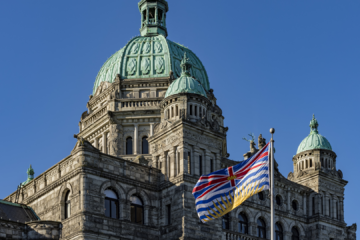A Closer Look at the Study Paper on Public Hearings: Historical Legislation
April 26, 2022
BY Kevin Zakreski
This post is part of a series highlighting BCLI’s Study Paper on Public Hearings: An Examination of Public Participation in the Adoption of Local Bylaws on Land Use and Planning. For other posts in the series click here.
Town Planning Act (1925)
In the early 20th century British Columbia’s local governments had rudimentary land use-planning powers that were “tightly worded to equip local governments to deal only with particular land use issues,” which meant that the governing provincial “legislation thereby reflected a prevailing view that local governments should be empowered to interfere with private land use decisions only sparingly.” But in 1925, BC changed course by enacting “[t]he first comprehensive delegation of legislative power to regulate land use in B.C.”
This legislation, called the Town Planning Act, has been described as “provid[ing] the essential elements of the planning and land use regulation toolkit that exists to this day.” The tools in that toolkit were: “the official comprehensive plan, the zoning bylaw with a mandatory public hearing, the planning commission and the board of variance, protection for existing uses from new regulations, the withholding of building permits during preparation of a zoning bylaw, and a ‘no compensation’ rule for property diminished in value by a zoning bylaw.”
The preamble to the act cited “large municipal expenditures [that] have become necessary owing to the fortuitous development of urban centres” as a reason for the act’s goal of “mak[ing] provision whereby the natural growth of cities and towns may be planned in a systematic and orderly way.” Planning for growth was then described as the means to secure a number of benefits, including reducing traffic congestion, encouraging economic development, preserving “the amenity of residential districts,” and providing “adequate areas . . . for protecting the health of and providing recreation for the public.”
While the Town Planning Act heralded a major shift in policy direction, it’s possible to overstate the nature of this change. If the past is represented by a policy of deference to the property rights of landowners, then the Town Planning Act wasn’t a clean break with this policy. Its provisions instead appear to be more concerned with trying to strike a balance between the new powers delegated to local governments and the desire to continue to protect those property rights.
This point can be seen from the list of tools in the “land use regulation toolkit” provided by the act, as described above. Some of these tools are clearly newly delegated powers for local governments (such as providing for the development of an “official comprehensive plan”). Others are more of check on the exercise of those powers (e.g., “protection for existing uses from new regulations”).
What was described as “a mandatory public hearing” falls into this latter camp. The section creating the requirement provided that a municipal “[c]ouncil shall not determine the boundaries of any district nor impose any regulations,” by “passing a zoning by-law,” “until after all persons who might be affected by the proposed by-law shall be afforded an opportunity to be heard on the matters covered therein before the Council.” A parallel provision applying to amending or repealing a zoning bylaw is clearer on this point, describing the public hearing as a council meeting in which “all persons whose property would be affected by such amendment or repeal may appear in person or by attorney or by petition” (emphasis added).
Even though the legislation at this point didn’t use the words public hearing, the hint of this idea was present. The notice requirement that went hand-in-hand with the hearing requirement called for broad notice to the public at large, through advertising “in not less than two consecutive issues of a newspaper published or circulating in the municipality.” This approach meant that notice of the public hearing wouldn’t just be given to neighbouring landowners. Instead, word of the hearing would be spread widely throughout the community.
For more information on this topic—or to see the citations for the quoted material—read the Study Paper on Public Hearings: An Examination of Public Participation in the Adoption of Local Bylaws on Land Use and Planning.











































